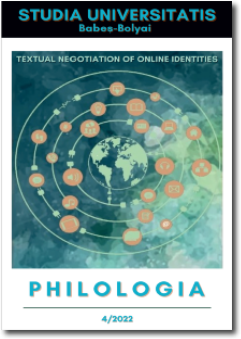MAPPING LANGUAGE LEARNING WITH EMOJIS: FROM PHATIC COMMUNICATION TO IDIOMS AND FLASH FICTION
MAPPING LANGUAGE LEARNING WITH EMOJIS: FROM PHATIC COMMUNICATION TO IDIOMS AND FLASH FICTION
Author(s): Ioana Mudure-IacobSubject(s): Language acquisition, Sociolinguistics, ICT Information and Communications Technologies
Published by: Studia Universitatis Babes-Bolyai
Keywords: emojis; content creators; speech acts; multimodality; participatory culture;
Summary/Abstract: Mapping Language Learning with Emojis: From Phatic Communication to Idioms and Flash Fiction. By roaming around digital resources in search of a customised learning approach, language learners often identify as netizens accustomed to a coded Internet language which is rarely juxtaposed with the language taught in the ESP classroom. To keep pace with shifting trends in online communication, teachers often need to expand the discursive membership by empowering learners to turn from users into content creators. By referring to the potential of using emojis in the framework of speech acts, the current paper aims to indicate directions of embedding emojis as social marking tokens and instruments of developing language and digital literacy skills in the foreign language class. The process of embedding emojis in language teaching stems from the integration of emoji as markers in the teaching of phatic communication, to reinforce the locutionary and illocutionary act of speech. Moreover, emojis can be used as an extension of teaching idioms, whereas the illocutionary and perlocutionary function of emoji is explored in interactive vocabulary practice tasks or within gamified sequences. Eventually, using emojis as perlocutionary acts in language learning is applied to storytelling as a mechanism of developing a multiliterate discourse, by means of which learners are introduced to writing emoji stories and flash fictions and then to translating them into words.
Journal: Studia Universitatis Babes-Bolyai - Philologia
- Issue Year: 67/2022
- Issue No: 4
- Page Range: 275-294
- Page Count: 20
- Language: English

